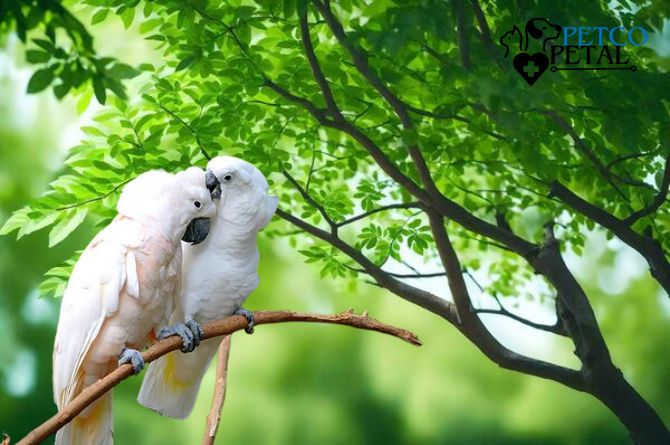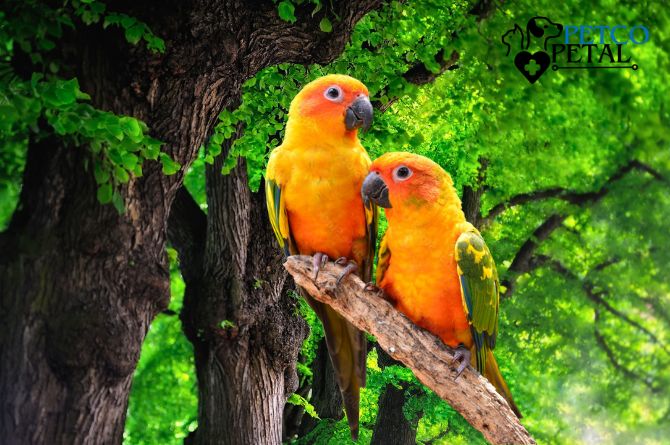Introduction
Bird breeding is a rewarding yet challenging hobby that has gained popularity among beginners. Whether you’re looking to expand your flock or enjoy the process of raising birds, understanding the basics of bird breeding is crucial.
Why a Proper Bird Breeding Setup is Essential
Success in bird breeding largely depends on having a well-thought-out bird breeding setup. A suitable setup not only ensures the health and well-being of your birds but also increases the chances of successful breeding. For beginners, creating the right environment from the start is key to avoiding common pitfalls and achieving desired outcomes.
Understanding the Basics of a Bird Breeding Setup
What is a Bird Breeding Setup?
A bird breeding setup refers to the environment and equipment specifically arranged to facilitate the breeding process in birds. This setup includes elements such as the breeding cage, nesting boxes, perches, feeding stations, and temperature controls. Each component plays a crucial role in creating a safe and conducive space for birds to mate, lay eggs, and raise their chicks.
Why Beginners Need a Thoughtful Setup
A well-planned bird breeding setup is vital for beginners to ensure the health and success of both the parent birds and their offspring. It minimizes the risk of breeding failures, reduces stress on the birds, and provides the necessary conditions for nurturing chicks. For those new to bird breeding, investing time and resources in a thoughtful setup can significantly improve the likelihood of a successful breeding experience.
Essential Components of a Bird Breeding Setup
1. Choosing the Right Cage
Size and Materials Suitable for Breeding
The cage is the foundation of any bird breeding setup. It should be spacious enough to allow the birds to move freely and exhibit natural behaviors. Materials like stainless steel or powder-coated metal are durable and safe for breeding birds. Avoid cages with toxic paint or sharp edges that could harm the birds.
Positioning the Cage in the Right Environment
The location of the cage is equally important. Place it in a quiet, well-ventilated area away from direct sunlight and drafts. The cage should be elevated off the ground to protect the birds from predators and disturbances.
2. Nesting Boxes and Materials
Types of Nesting Boxes Ideal for Different Bird Species
Nesting boxes are essential for providing a secure space for birds to lay eggs and raise their chicks. The type of nesting box should match the specific needs of the bird species you are breeding. For example, finches prefer small, enclosed boxes, while parrots may require larger, sturdier ones.
Recommended Materials for Nest Building
Providing the right nesting materials is crucial for successful breeding. Materials such as softwood shavings, coconut fibers, and shredded paper are commonly used. Ensure that the materials are clean, free from chemicals, and safe for the birds.
3. Temperature and Lighting Requirements
Importance of Maintaining the Right Temperature
Temperature control is critical in a bird breeding setup. Most breeding birds thrive in temperatures between 65-75°F (18-24°C). Sudden fluctuations can stress the birds and affect their breeding success, so it’s important to maintain a stable environment.
Role of Lighting in a Successful Bird Breeding Setup
Adequate lighting mimics natural daylight and stimulates breeding behaviors. A light cycle of 12-14 hours of light and 10-12 hours of darkness is ideal for most species. Consider using full-spectrum lighting that closely resembles natural sunlight.
4. Feeding and Nutrition
Diet Essentials for Breeding Birds
A balanced diet rich in proteins, vitamins, and minerals is essential for breeding birds. Include a variety of seeds, pellets, fresh fruits, and vegetables to meet their nutritional needs. Additionally, calcium supplements are important for egg-laying females.
How to Ensure Proper Nutrition During Breeding
During the breeding season, increase the intake of protein-rich foods such as boiled eggs, mealworms, and legumes. Monitor the birds’ food intake closely and ensure that fresh water is always available. Proper nutrition directly impacts the health of the chicks and the overall success of your bird breeding setup.
Tips for Setting Up a Bird Breeding Environment

Creating a Stress-Free Environment
How to Minimize Disturbances and Stress for Breeding Birds
A peaceful environment is crucial for the success of your bird breeding setup. To minimize stress, place the breeding cage in a quiet area away from high-traffic zones, loud noises, and sudden movements. Limit handling of the birds, especially during the breeding season, as excessive interaction can cause anxiety. Covering the cage partially with a cloth can provide a sense of security and help the birds feel more comfortable.
Monitoring and Maintaining the Setup
Regular Checks and Adjustments to Keep the Bird Breeding Setup Optimal
Consistent monitoring of your bird breeding setup is essential to ensure everything remains in optimal condition. Regularly inspect the cage for cleanliness, making sure to remove waste and uneaten food promptly. Check the nesting boxes for signs of wear and replace any damaged materials. Keep an eye on the temperature and humidity levels, adjusting them as needed to maintain a stable environment. Additionally, observe the birds for any signs of stress or illness, and address issues immediately to prevent them from affecting the breeding process.
Common Mistakes to Avoid in a Bird Breeding Setup

Overcrowding the Cage
One of the most common mistakes beginners make is overcrowding the breeding cage. Placing too many birds in a single cage can lead to stress, aggression, and competition for resources like food and nesting sites. Overcrowding can also increase the risk of disease transmission. To avoid this, ensure that the cage is spacious enough to accommodate the birds comfortably, allowing them room to move, fly, and engage in natural behaviors without feeling confined.
Neglecting Proper Ventilation
Adequate ventilation is critical in a **bird breeding setup** to maintain good air quality and prevent the buildup of harmful gases like ammonia. Poor ventilation can lead to respiratory issues and other health problems in birds. Make sure the breeding area has sufficient airflow, but avoid placing the cage in direct drafts. If using a closed setup, consider adding ventilation holes or using a fan to circulate air without causing discomfort to the birds.
Ignoring Species-Specific Needs
Different bird species have unique requirements when it comes to breeding. Ignoring these species-specific needs can result in failed breeding attempts and stress for the birds. For example, some birds may require specific types of nesting materials, while others may need particular lighting or temperature conditions. Research the specific needs of the bird species you are breeding and tailor your bird breeding setup to meet those requirements. This attention to detail will significantly increase your chances of a successful breeding experience.
Conclusion
Recap of the Importance of a Well-Planned Bird Breeding Setup
A well-thought-out bird breeding setup is the foundation of successful bird breeding. From choosing the right cage and nesting materials to maintaining optimal temperature and nutrition, every aspect plays a vital role in ensuring the health and well-being of both the parent birds and their offspring. Avoiding common mistakes like overcrowding and neglecting species-specific needs can make the difference between success and failure in your breeding efforts.
Encouragement for Beginners to Start with a Proper Setup for Successful Bird Breeding
For beginners, taking the time to carefully plan and execute your **bird breeding setup** is an investment in the future success of your breeding endeavors. By providing a safe, comfortable, and well-maintained environment, you are setting the stage for a rewarding and fulfilling bird breeding experience. Don’t rush the process—start with a proper setup, and enjoy watching your birds thrive and reproduce in a space designed for their needs.
FAQs
What is the Best Bird Breeding Setup for Small Birds?
The best bird breeding setup for small birds, such as finches or budgies, includes a spacious cage with dimensions that allow for flight, a suitable nesting box tailored to the species, and soft, non-toxic nesting materials like coconut fibers or shredded paper. Ensure the cage is placed in a quiet, well-lit area with stable temperature and humidity levels. Small birds are sensitive, so it’s important to minimize disturbances and provide a stress-free environment.
How Often Should I Clean the Breeding Cage?
The breeding cage should be cleaned regularly to maintain a healthy environment. It’s recommended to spot-clean daily by removing waste, uneaten food, and debris. A more thorough cleaning, including washing the cage bars, perches, and feeding stations, should be done weekly. During the breeding season, take extra care not to disturb the nesting area too much, but do maintain hygiene to prevent the spread of bacteria and parasites.
Can I Use the Same Setup for Different Bird Species?
While some aspects of a bird breeding setup can be similar across species, such as the need for proper nutrition and a clean environment, it’s important to customize the setup based on the specific needs of each bird species. Different species may require different cage sizes, nesting boxes, and environmental conditions. For example, parakeets and canaries have different nesting preferences and space requirements. Researching and adapting the setup to suit the particular species you are breeding will lead to better breeding outcomes.

